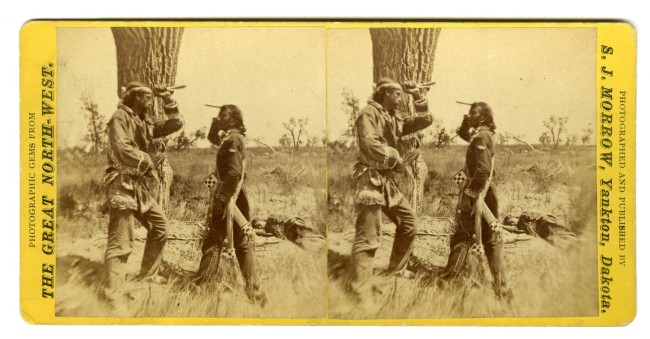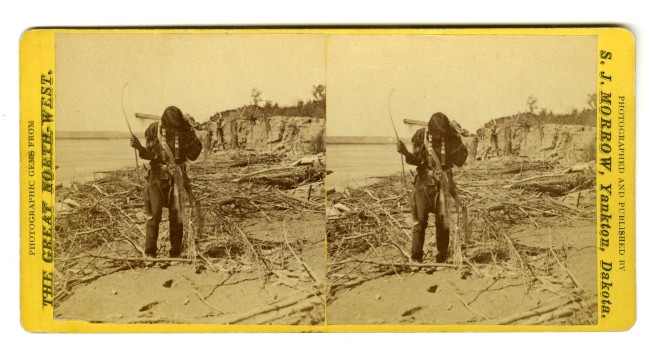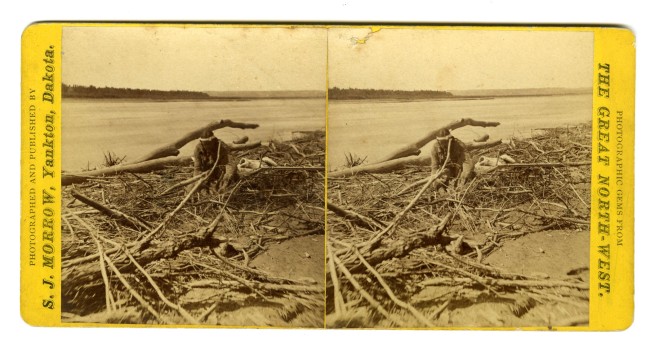Yellowstone Kelly
by Jeffrey Kraus
[The text for this post is from Wikipedia.]
Luther Sage “Yellowstone” Kelly (July 27, 1849 – December 17, 1928) was a soldier, hunter, scout, adventurer and administrator. He served briefly in the Civil War and then in an 1898 expedition to Alaska. He commanded a U.S. Army company in the Philippine-American War and later served in the civilian administration of the Philippines.
Luther Sage “Yellowstone” Kelly was born July 27, 1849, in Geneva, New York. His father, also named Luther Kelly, owned a drug and grocery store in Geneva. His mother, Jeanette Eliza Sage, was the daughter of Colonel Hezekiah Sage of nearby Chittenango. Kelly’s father died on February 14, 1857, leaving him the man of the family, but the family had enough money saved to live comfortably. In either late 1864 or early 1865, Kelly entered the Geneva Wesleyan Seminary, but his real interest was in joining the army and fighting in the Civil War; he would later write that he “deplored the fact” that his youth rendered him unfit for military service at that time. In the spring of 1865, with the Civil War winding down, Kelly secured permission from his mother to join the Army. He traveled to Rochester, New York, where he attempted to join the Fourth New York Cavalry but was turned down due his young age (15). Later he joined the 10th Infantry by lying about his age. He was unaware that the 10th Infantry was not a volunteer corps and that he would be obliged to continue serving after the war. Kelly was sent to City Point, Virginia. After Robert E. Lee’s surrender at Appomattox his regiment was sent to Richmond and then marched towards Washington, D.C., encamping south of the Potomac River until after the Grand Review of the Armies. Because Kelly’s unit had not participated in the Grand Review, it was selected for a parade through Washington on June 8, during which Kelly served as part of the guard detail for the reviewing officer, “his first official duty of any real consequence”. Kelly’s unit was stationed in Washington over the summer. In November they were moved by train to St. Paul, Minnesota to be stationed at Fort Snelling for the winter. In May, his company moved among Fort Abercrombie, Fort Wadsworth and Fort Ransom, all in the Dakota Territory. During his free time at these forts, Kelly hunted game to provide fresh meat for his fellow soldiers. In April 1868, Kelly’s enlistment in the Army ended, and he was discharged at FortRansom.
After leaving the army, Kelly embarked on what The New York Times later called “the most adventurous period of his life”, establishing himself as “one of the greatest hunters, trappers, and Indian scouts” of the American West. He first traveled to Fort Garry, now Winnipeg in Canada, where he joined a group of miners, traveling with them to the Red River, where he spent the winter. He left the miners to cross the Assiniboine River, falling in with a group headed toward the Mouse River. After meeting Sitting Bull with this group, Kelly and headed alone toward the Missouri River, eventually reaching Fort Buford in the winter.
Not long after his arrival at FortBuford, Kelly volunteered to carry dispatches to Fort Stevenson, approximately fifty miles down the Missouri River. He left the fort on February 5, 1869. The route between the forts was considered so dangerous, due to the presence of Sioux warriors, that mail carriers were generally accompanied by a cavalry escort, but Kelly set out alone. He arrived safely at Fort Stevenson then set out on his return journey, spending the night at the camp of Bloody Knife, an Arickaree chieftain. The next morning, Kelly was ambushed by two Sioux warriors. The first wounded Kelly’s horse with a rifle, while the second shot Kelly in the knee with an arrow. Kelly managed to shoot and kill the first attacker quickly, but the second took cover behind a tree. Kelly eventually shot and killed his second assailant, then returned to Bloody Knife’s camp to tell the story. Kelly spent a few days at Bloody Knife’s camp recovering from his wound, then rode back to Fort Buford, becoming “something of a hero and a local celebrity” for defeating his two assailants.
Yellowstone Kelly in hand-to-hand encounter with a Sioux.
An Indian discovers Yellowstone Kelly’s Trail
Yellowstone Kelly setting traps for beaver.
Although the United States had purchased Alaska from Russia in 1867, Americans were not interested in it until gold was discovered there in 1896. In 1898 the U.S. Army deployed three separate units under the commands of Captains Bogardus Eldridge, William R. Abercrombie, and Edwin F. Glenn to map a route from the Yukon, scout the Copper River Valley, and conduct reconnaissance. They would begin near the Prince William Sound and work toward the interior. Kelly was assigned to Glenn’s unit as an interpreter and guide.
Departing Seattle by ship on April 7, 1898, they arrived along the Alaskan coastline approximately five days later. While unloading and preparing for the expedition, they received news of the outbreak of the Spanish-American War on April 23. Eldridge’s unit was ordered to return to its regiment, while Abercrombie and Glenn’s parties were to continue their assigned missions. Although the other soldiers were eager to return to their regiments to join the war, they reasoned that it would be mostly a naval war with little role for the Army. Support for the expedition dwindled in light of the American public’s enthusiasm for the war. In accordance with President William McKinley’s request for additional men for the war, Kelly was offered a commission as a captain in the U.S. Volunteers. Kelly departed Alaska on October 9, and Glenn’s unit continued its mission until November 10. By the time Kelly arrived back in Seattle the war had ended, and with it his captaincy.
The Army’s expedition into Alaska was largely overshadowed by the war in the public eye and in contemporary historians’ accounts. It made possible the completion in 1923 of theAlaska Railroad, which followed the route mapped by the 1898 expedition. A year later came the maritime Harriman Alaska Expedition.
In August 1899 Kelly received another commission as a captain, this time with the Army’s 40th Volunteers, following Congress’s authorization of an increase in the Army by 35,000 men to put down the insurgency in the Philippines. This war, unlike the six-month war with Spain with 500 combat deaths, “would drag on for three long years” and cost the lives of over 4,000 U.S. servicemen.
The 40th Regiment departed from Fort Riley, Kansas, by train in November 1899 for California. After two weeks there, they shipped out from the Presidio, arriving in the Philippinesin late December 1899. Kelly’s company was under the command of Brigadier General James Bell, who had served with Kelly during the Nez Perce campaigns of the Indian Wars. Captain Kelly’s company aboard the vessel Venus departed Manila along with four other transports headed for the shores of San Miguel Bay. From there the companies began their marches inland to clear the areas of insurgents.
Kelly’s company met heavy resistance on the outskirts of the town of LaLud. Insurgents under the command of a Colonel Legaspi opened fire on Kelly’s advancing infantrymen with two field guns, but Kelly’s men managed to kill the enemy artillerymen and silence the guns. With heavy foliage flanking the enemy’s position, Kelly led a frontal assault and routed them. In the process, Kelly captured Legaspi’s ceremonial Spanish sword.
Kelly later served in the administration of the new civilian governor of the Philippines, future President William Howard Taft. By 1903, as Kelly wrote to a friend, “I have been in the Philippines so long now (3 years)… this country is a wearing one… my health is excellent, but three years is the limit.” On November 15, 1903, Kelly was relieved of his duties in the Philippines and ordered to report back to Washington, D.C., for his next assignment, as Indian Agent for the San Carlos Indian Reservation in Arizona.
In 1915, after a few years gold mining in Nevada, Kelly settled permanently in Paradise, California, where, on 17 December 1928, he died. He was buried with the sword he captured from Legaspi at LaLud.


